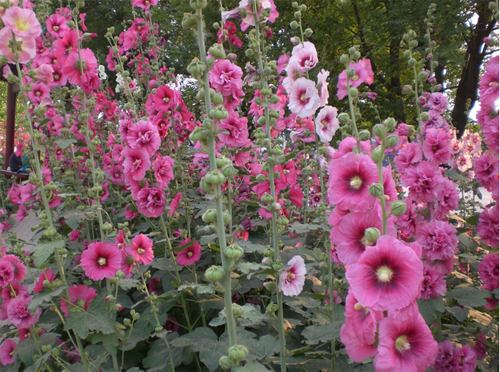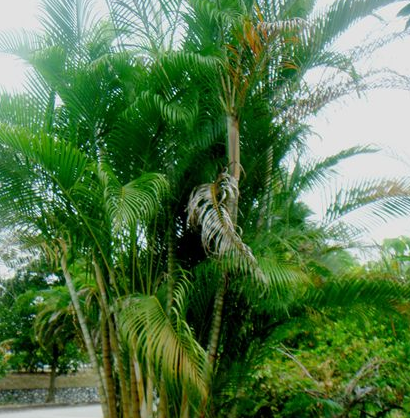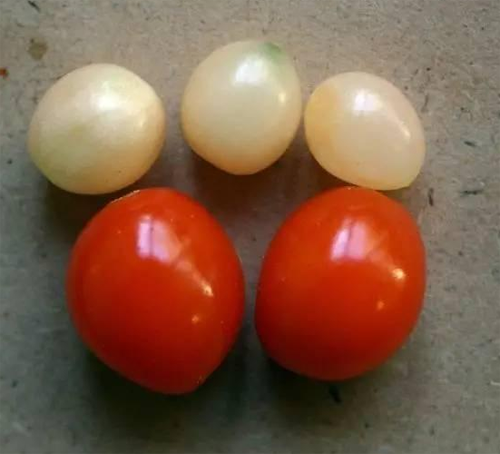What is the price of seeds for propagation and pest control of hollyhock
Hollyhock used to grow in Sichuan, just have the name of hollyhock, how does hollyhock breed? If you want to raise a few more plants at home, which diseases and insect pests are easy to encounter in the process of breeding? What is the price of hollyhock seeds?

The breeding method of hollyhock:
1. Sowing season
In August, the seeds can be sowed after they are mature in September, and blossom the following year (much better in autumn); it is not easy to blossom in spring sowing. The appropriate temperature is 1725 degrees. The seedlings emerge 7 days after sowing and are slightly covered against cold in winter.
Seeds can be sowed after maturity, the germination ability of hollyhock seeds can be maintained for 4 years, sowing directly in the open field or pot seedlings, properly combined with transplanting in overcast and rainy days, can also be directly interseedling, it is perennial.
2. Ramet propagation
Ramets are usually carried out in autumn. On cloudy days, the roots of perennial hollyhocks are dug out and cut into several clumps with a sharp knife, so that each clump has two or three buds, and then it can be planted separately.
3. Cuttage propagation
After cutting flowers to winter, take the side branches germinated at the base of the old trunk of Sichuan sunflower as cuttings, about 8 cm long, either in a dry sand bed or in a basin.
After insertion, cover it with plastic film for moisturizing (make sure to leave some holes to breathe) and move to the shade until it takes root. Keep warm and humidify before and after winter, which can accelerate the production of new roots.
Disease and pest control of hollyhock:
1. Rust
The leaves of the plant turn yellow or die, and brown spots can be seen on the back of the leaves.
Treatment: Bordeaux solution was sprayed on the plants in spring and summer, and the seeds should be disinfected before sowing; at the beginning of the disease, 1 trimethoprim, or methyl thiophanate, chlorothalonil, etc., were sprayed every 7 to 10 days, 2 times in a row.
2. Red spiders (mite pests)
During the growth period, there are red spiders, small red spots, can be controlled with avermectin and pyridaben.
Do not use dichlorvos to kill mites and do not use pyrethroid pesticides, which are basically ineffective for the control of mites.
3. White spot disease
Also known as spot blight, leaves at the beginning of the onset of brown spots, gradually expanded into irregular spots, the middle gray-white outer edge reddish brown.
Treatment: remove the diseased leaves in time, pay attention to the density of branches and stems, and maintain ventilation and light. It can be sprayed with chlorothalonil, carbendazim and methyl topiramate, once every 10 days, for 3 consecutive times.
Seed price of hollyhock:
The seeds of this hollyhock are still a little expensive, which costs more than 30 yuan per jin, and there are more expensive ones. We should be careful to sell the seeds of hollyhocks, lest the seeds bought will not germinate at all.
Cultivation management and pest control of hollyhock
Hollyhock (scientific name: Althaea rosea (Linn.) Cavan.), also known as Yizhang Hong, Da Shu Ji, military sunflower. Erect biennial herbs, up to 2 m tall, stem branches densely prickly. Flowers are raceme terminal single or double, purple, pink, red, white and other colors; florescence from June to August, capsule, seed oblate, kidney-shaped. Like plenty of sunshine, withstand half-overcast, but avoid waterlogging.
Originally from Sichuan, China, it is widely distributed in China, including East China, Central China and North China. Because it originated in Sichuan, China, it is called "hollyhock". And because it can reach Zhang Xu, most of the flowers are red, hence the name "Yi Zhang Hong". It blossoms when the wheat is ripe in June, and is named "barley ripe".
It is usually cultivated by sowing, and it can also be cultured by ramet and cuttage. When the seeds mature in August and September, they can be sown after harvest and blossom in the following year; it is not easy to blossom in spring sowing and emerge after 7 days. When the seedlings grow 2-3 true leaves, they should be transplanted once and the row spacing should be increased. Cover (straw or leaves) slightly in winter to protect against cold and can be planted when sprouting in the next spring. Planting hollyhock in a small area can be sown on demand directly. after the seedlings are unearthed, pull out the weak seedlings properly. Ramet culture is carried out in spring. After planting, hollyhock was watered at the right time, and before flowering, topdressing was applied for 1 or 2 times combined with mid-tillage and weeding. When the old roots sprout in early spring, they should be watered properly. It is usually updated every 4 years. Hollyhocks are vulnerable to leaf rollers, aphids and red spiders, and old plants and dry weather are prone to rust, which should be controlled in time. Propagation methods of hollyhock
Propagation method of hollyhock: sowing method
After the seeds are mature in August and September, they can be sown and blossom the following year. If they are sown in spring, it is not easy to blossom in that year. In the south, seeds are often sown in autumn, while in the north, they are mainly sown in spring.
According to the number of seeds, you can choose to sow in the open field seedbed, and then transplant, or sow directly in the soil, no longer transplant, the soil generally choose rotten leaf soil, field soil, before sowing to disinfect the soil to control the occurrence of diseases and insect pests.
Under normal circumstances, it can germinate in 7 days and transplant when 2 Mel 3 leaves are grown. It is best to transplant in cloudy and rainy days, which is very beneficial to the growth of plants.
The seed germination power of hollyhock can be maintained for 4 years, but the growth of seedlings will decline after two or three years, and the seedlings are easy to be quenched, so the management of seedling bed should be strengthened and drugs can be added to the soil properly.
Propagation method of hollyhock: split plant method
The ramet of hollyhock is usually carried out in autumn. The perennial hollyhock is dug out of the soil and the stem bud is divided into several clumps with a sharp blade to ensure that each clump has two or three buds.
Then respectively planted in the substrate, the matrix generally choose fertile, well-drained sandy soil. Water thoroughly immediately after planting, and it will blossom the following year.
Propagation method of hollyhock: cutting method
Cuttings can be carried out from flowering to winter.
Generally select the side branches that germinate at the base of the old dry hollyhock as cuttings, the length is about 8 cm, and the matrix is generally sandy soil.
After cutting, cover the nursery bed with plastic film, maintain a certain amount of humidity, and place it in the shade until the roots grow.
For cutting in winter, a heating device needs to be laid at the bottom of the seedling bed to increase the ground temperature, maintain the temperature of the seedling bed and accelerate the growth of new roots.
- Prev

Culture methods and matters needing attention price and alias of loose-tailed sunflower
Loose-tailed sunflower is in many people like breeding, which can be cultured indoors, can purify the air, but also grow more good-looking, what are the breeding methods and matters needing attention? What is the price of sunflower? What other aliases are there?
- Next

What is the breeding method and breeding alias of Cymbidium
Tiger orchid is a charming leprechaun, the flowers look good, the fruit looks like a small tomato, how can there be such a lovely plant, how to raise tiger orchid? How to breed, what's the alias? The culture method of tiger orchid: the tiger orchid originated in South Africa.
Related
- Fuxing push coffee new agricultural production and marketing class: lack of small-scale processing plants
- Jujube rice field leisure farm deep ploughing Yilan for five years to create a space for organic food and play
- Nongyu Farm-A trial of organic papaya for brave women with advanced technology
- Four points for attention in the prevention and control of diseases and insect pests of edible fungi
- How to add nutrient solution to Edible Fungi
- Is there any good way to control edible fungus mites?
- Open Inoculation Technology of Edible Fungi
- Is there any clever way to use fertilizer for edible fungus in winter?
- What agents are used to kill the pathogens of edible fungi in the mushroom shed?
- Rapid drying of Edible Fungi

